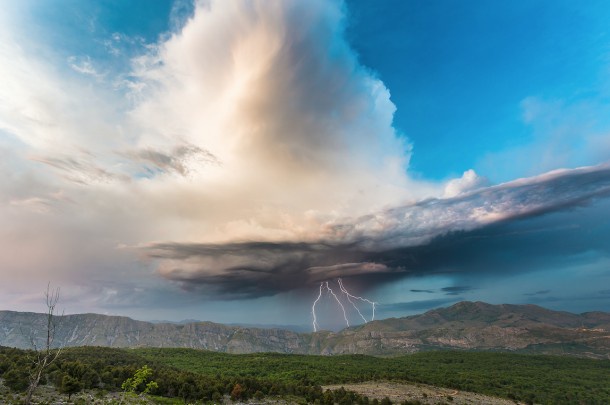Natural disasters driven by weather patterns have a profound impact on communities worldwide. From hurricanes and tornadoes to floods and wildfires, these catastrophic events can devastate lives and properties. To safeguard against the unpredictable forces of nature, preparedness and mitigation are critical. In this article, we'll explore the importance of readiness and mitigation strategies in the face of weather-related natural disasters https://climatempo.com/
The Need for Weather-Related Disaster Preparedness
When it comes to dealing with weather-related natural disasters, the old adage holds true: "An ounce of prevention is worth a pound of cure." In this section, we'll discuss the importance of preparedness.
-
Assessing Vulnerabilities
- Conducting a risk assessment is the first step. Identify the specific natural disasters that are prevalent in your region. For instance, if you live in a coastal area, hurricanes may be a concern, while tornadoes are more common in the Midwest.
-
Developing Emergency Plans
- Create a comprehensive emergency plan for your family or community. This should include evacuation routes, designated meeting points, and communication strategies. Ensure that everyone understands their role during an emergency.
-
Assembling Disaster Kits
- A well-prepared disaster kit is a lifeline during a crisis. It should include essentials like non-perishable food, water, first aid supplies, flashlights, batteries, and important documents. Be sure to customize your kit based on your region's specific risks.
-
Stay Informed
- Keep abreast of weather forecasts and warnings. Weather apps and emergency alert systems provide real-time updates, allowing you to respond promptly to changing conditions.
Mitigation Strategies for Weather-Related Natural Disasters
Preparedness is crucial, but mitigation goes a step further. Mitigation focuses on minimizing the impact of disasters, often through long-term planning and actions.
-
Building Codes and Regulations
- Implement and adhere to stringent building codes and regulations. This is particularly vital in areas prone to hurricanes and earthquakes. Reinforced structures can withstand the forces of nature better, reducing damage and loss of life.
-
Elevating Structures and Floodproofing
- In flood-prone regions, elevating buildings or floodproofing basements can mitigate damage. Additionally, the installation of sump pumps and backflow valves can prevent water infiltration.
-
Vegetation and Landscaping
- Planting windbreaks and using fire-resistant landscaping can help mitigate the effects of wildfires. Properly managed vegetation can act as a barrier, slowing the spread of fires.
-
Investing in Early Warning Systems
- Early warning systems are crucial for disaster preparedness. Timely information can save lives. Governments and communities should invest in advanced technologies to provide early warnings for hurricanes, tsunamis, and other disasters.
-
Community Planning and Education
- Raising awareness and educating the community is a cornerstone of disaster mitigation. Teach people how to prepare and respond to weather-related disasters. Conduct regular drills and exercises to ensure everyone knows what to do in case of an emergency.
The Economic and Human Cost of Weather-Related Disasters
Weather-related natural disasters come at a high cost, both in terms of lives lost and economic impact. Understanding these costs can underscore the importance of preparedness and mitigation efforts.
-
Human Lives and Health
- Weather-related natural disasters claim thousands of lives each year. In 2020 alone, the Atlantic hurricane season resulted in 30 named storms, with over 400 fatalities and billions in damages.
-
Economic Impact
- The economic repercussions are staggering. The National Oceanic and Atmospheric Administration (NOAA) reported that the U.S. faced a record-breaking $95 billion in disaster damages in 2020, making it the costliest year ever.
-
Long-Term Consequences
- Beyond immediate losses, weather-related disasters can have long-term effects on the mental health and well-being of survivors. Communities may struggle to recover, and the scars of such events can linger for years.
Government and Community Responsibilities
Both government entities and local communities play a crucial role in disaster preparedness and mitigation.
-
Government Initiatives
-
Governments must enact policies and allocate resources for disaster preparedness and mitigation. This includes investing in infrastructure, supporting research, and providing disaster relief.
-
As FEMA Administrator Deanne Criswell emphasizes, "Government plays a pivotal role in helping communities prepare for and respond to disasters. We must work together at all levels to build a resilient nation."
-
-
Community Involvement
- Communities must actively engage in disaster preparedness. Neighbors helping neighbors can make a significant difference during a crisis. Join local disaster response teams, participate in drills, and contribute to creating safer neighborhoods.
Weather-related natural disasters are a constant threat, but with proper preparedness and mitigation strategies in place, we can significantly reduce their impact. As Benjamin Franklin famously said, "By failing to prepare, you are preparing to fail." It is imperative that we take responsibility for our safety and the well-being of our communities. By working together, from local neighborhoods to national governments, we can build a more resilient and disaster-ready world.
Remember, disaster preparedness and mitigation are not luxuries but necessities. Together, we can weather the storm and emerge stronger on the other side.
In conclusion, weather-related natural disasters are a growing concern in our rapidly changing climate. To protect lives and property, individuals, communities, and governments must prioritize disaster preparedness and mitigation efforts. By understanding the need for preparedness, implementing mitigation strategies, and recognizing the high human and economic costs of these disasters, we can take proactive steps to build resilience and ensure a safer future for all.


No comments yet